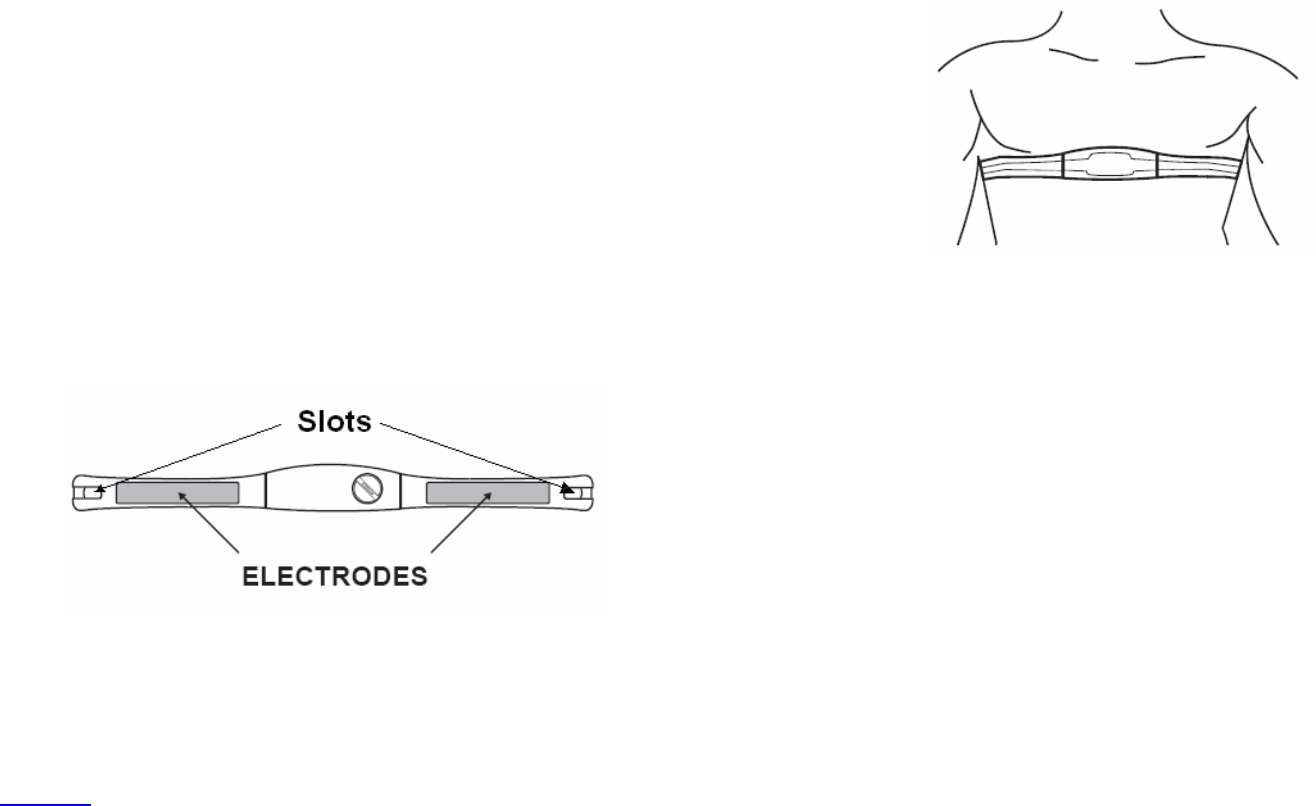National Electronics and Watch M09155HR Heart Rate Chest Strap 2.4G Transmitter User Manual
National Electronics & Watch Co., Ltd Heart Rate Chest Strap 2.4G Transmitter Users Manual
Users Manual

M09-155
Pair your Heart Rate monitor: (HRM belt is optional and is sold
separately)
The HRM belt is on standby and ready to send data to your watch. Wear the belt directly on
your skin just below your breastplate. It should be snug enough to stay in place during your
run.
5.1) Push one tab on the strap through the slot in the HRM transmitter.
5.2) Wet both electrodes with a damp cloth on the back of the HRM belt. This will help create
a strong electrical connection between your chest and the HRM transmitter.
5.3) Wrap around the chest belt around your rib cage just below the pectoral muscles and
attach the other end of the strap to the HRM transmitter. The elastic strap should be
adjusted so that it is snug enough so that it will not move during use but not so tight as to
restrict breathing.
5.4) Bring the GPS watch within range of the HRM transmitter (3 meters). Go to SET mode/
HRM LINK to start linking the HRM belt with the watch. The watch will auto detect the
HR belt ID. Click Yes to accept. The watch will then automatically go to RUN mode. Your
Heart rate information will now be displayed in the watch.
5.5) If the heart rate data does not appear on the watch, or if you have erratic data, follow the
tips below. If the problem persists, you may have to pair the HR belt again.
5.5.1. Make sure the HR belt is snugly fit to your body
5.5.2. Reapply water, saliva, or electrode gel to the electrode of the HR belt
5.5.3. Clean the electrodes from possible contamination that may interfere with heart
rate signals
5.5.4. Wear a cotton shirt or if possible, wet your cotton shirt. Synthetic fabrics that
rubs with your skin may create static electricity and interfere with the heart rate
signal
5.5.5. Move away from strong electromagnetic fields and other wireless sensors which
can interfere with your heart rate sensor. Possible sources of wireless
interference may include high voltage power lines, electric motors, microwave
ovens, cordless phones, and wireless LAN or access points.
Note: Set your Heart rate zone in SET mode.
Caution:
Any Changes or modifications not expressly approved by the party responsible for
compliance could void the user’s authority to operate the equipment.
This device complies with part 15 of the FCC Rules. Operation is subject to the following two
conditions:
(1) This device may not cause harmful interference, and
(2) This device must accept any interference received, including interference that may cause
undesired operation.